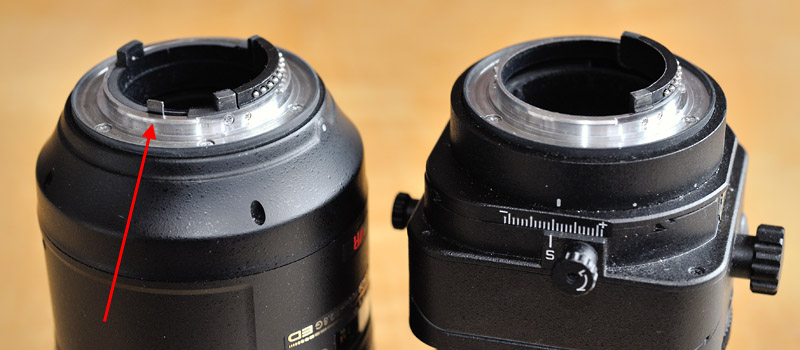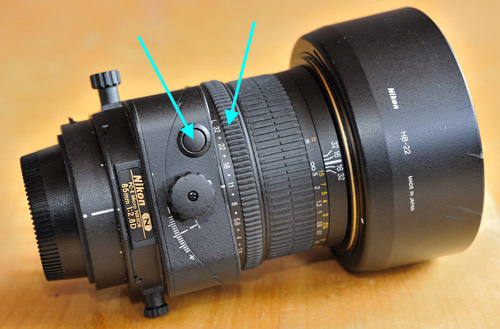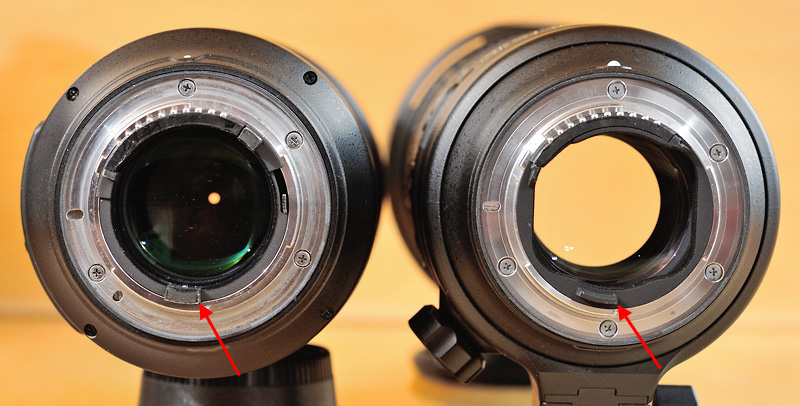
Nikon has just introduced the AF-S Nikkor 800mm f/5.6 E FL ED VR. I'm sure it is a great lens. I would buy it immediately, but, pity, the price is slightly above my usual budget... Nevertheless, this lens should be the cause to think about 'E' lenses. In terms of compatibility the new telephoto lens is a very deep cut! Of course, if you are able to buy this lens you can also buy a new camera body in addition to it.
In 1992 Nikon introduced the first generation of their AF-I(AF-S) lenses, featuring an integrated autofocus drive. This new way of autofocussing was only supported by two camera bodies of that time: the F4 and the F90 (US: N90). The AF-I lenses were high-priced super telephoto lenses. Therefore, It was not really of interest for me and my F-801 in that time. But only twelve years later the integrated AF drive had become Nikon's usual autofocus technology.
Maybe, we can draw a parallel between these two things, meaning 'E' lenses may become common Nikon technology in a few years. Furthermore, we may have to expect a camera that does only support 'E' lenses in the future (as a counterpart to the D40, which was the first AF camera that does not support screwdriver AF)...

|
|
The interfaces of a 'G' lens (on the left: AF-S Micro-Nikkor 105mm f/2.8 G) and an 'E' lens (on the right: PC-E Micro-Nikkor 85mm f/2.8). A 'G' lens has at least one mechanical coupling element (red arrow): the aperture lever, which, since the days of the Nikon F, is needed for stopping down the lens just before the shutter opens. In contrast, the diaphragm of an E lens is driven electrically. |
The oldest cameras which support the new 800mm 'E' lens are the D3 and the D300. In conjunction with older cameras the lens is useless. Especially, there is no compatible, analogue SLR for that lens.
In my opinion, the friends of film should not give up hope for a new analogue SLR from Nikon or at least for a F6s with an improved interface.
An 'E' lens doesn't employ mechanical coupling elements anymore. While the diaphragm of a 'G' lens is controlled mechanically, an 'E' lens closes and opens it electrically.
In my opinion, the 'E' technology has a couple of advantages:
But 'E' lenses have a drawback, too. Over the years Nikon has produced many great mechanical SLRs. None of them suport 'G' lenses, but a mechanical camera for 'G' lenses is possible. For 'E' lenses it is definitively not possible, because an 'E' lens does not work without electricity. Thus, if you plan to cross the Greenland ice sheet, you should not buy 'E' lenses ;)

|
|
The PC-E lenses have an aperture ring and a stop-down button. In contrast to the new 800mm lens that makes it possible to use these lenses in conjunction with some older cameras. |
Nikon's first 'E' lens was the PC-E Micro-Nikkor 85mm f/2.8, introduced in 2008. The 'E' technology is predestinated for a tilt&shift lens, because the complete unit included the diaphragm is tilted and/or shifted. A mechanical control of the aperture is nearly impossible for such a lens. Therefore earlier PC lenses (PC = perpective control) had to be stopped down manually and the metering was also only possible stopped down.
Nikon's three PC-E lenses (24mm f/3.5, 45mm f/2.8 and 85mm f/2.8) are usable with manual aperture control on some older cameras. That means, you must stop down the lens manually both for metering and before shooting (same workflow as with the former PC Nikkors). But pay attention: even a PC-E lens needs electricity, which is only provided by a very few cameras. The oldest ist the F4, the queen of compatibility. Then there are the F90/N90, F90x/N90s, F5, F80/N80, F100, F65/N65, F75/N75, F6 and every DSLR.
If the aperture ring is set to the 'L'-position, a PC-E lens behaves like the new 800mm lens: It works without restrictions on a D3 or D300 and every younger DSLR, behaving like a 'G' lens. That is a big improvement over the workflow of the old PC lenses!
At the end of the last century, the world of a Nikon fan was still in order: old lenses were usable on new cameras and vice versa (exceptions prove the rule). We could say: the compatibility of the F-Mount was bidirectional. Today, the compatibility of the F-Mount is more unidirectional: almost every Nikkor lens is usable in conjunction with the current DSLRs, but many combinations of a new lens and an older camera are useless. 'E' lenses tighten this tendency.
The possible image quality is determined by two things: the quality of the image sensor and the quality of the lens (of course, the camera body, especially the shutter should work properly). If you load an F and an F6 with the same type of film, the image quality will be alike (assumed you are using the same lens). But if you compare a D1 with (the DX crop of) a D4, the D4 will win hands down. In the digital age, it does not matter whether a new lens is usable on a 10-year-old DSLR and therefore, Nikon's unidirectional compatibility is absolutely okay! Thus, 'E' lenses are not a problem for me.
Nevertheless, one point of criticism remains: Nikon should offer an analogue SLR that supports 'E' lenses.

|
| Mount comparison: Micro-Nikkor 105mm f/2.8G vs. Nikkor 70-200mm f/2.8E. |
I would like to mention two things:
Usage on cameras without a CPU interface
On such cameras both lenses have the problem that the aperture cannot be controlled. With a 'G' lens you always shoot with the smallest aperture (diaphragm fully closed), while the diaphragm of an 'E' lens is wide open all the time. In my eyes it is an advantage for the 'E' lens, especially if the particular lens performs very good wide open like the 70-200mm f/2.8E. But overall it is a better idea to buy a new camera or to buy an older lens for your older camera!
Evolutionary artifact
In 1977 Nikon introduced the AI system. AI lenses have got the speed post that allows the camera to read the speed of the lens mechanically, see my article "the difference between an AI-modified and an AI lens". Besides, this post allows you to put a lens on a table with its rear end without damaging the rear lens element. Most 'G' lenses also have this post, which is ok due to the (theoretical) possibility to build a mechanical camera that supports 'G' lenses. But an 'E' lens needs power for controlling the diaphragm! Nevertheless, the AF-S 70-200mm f/2.8E FL VR has got a correctly positioned speed post!